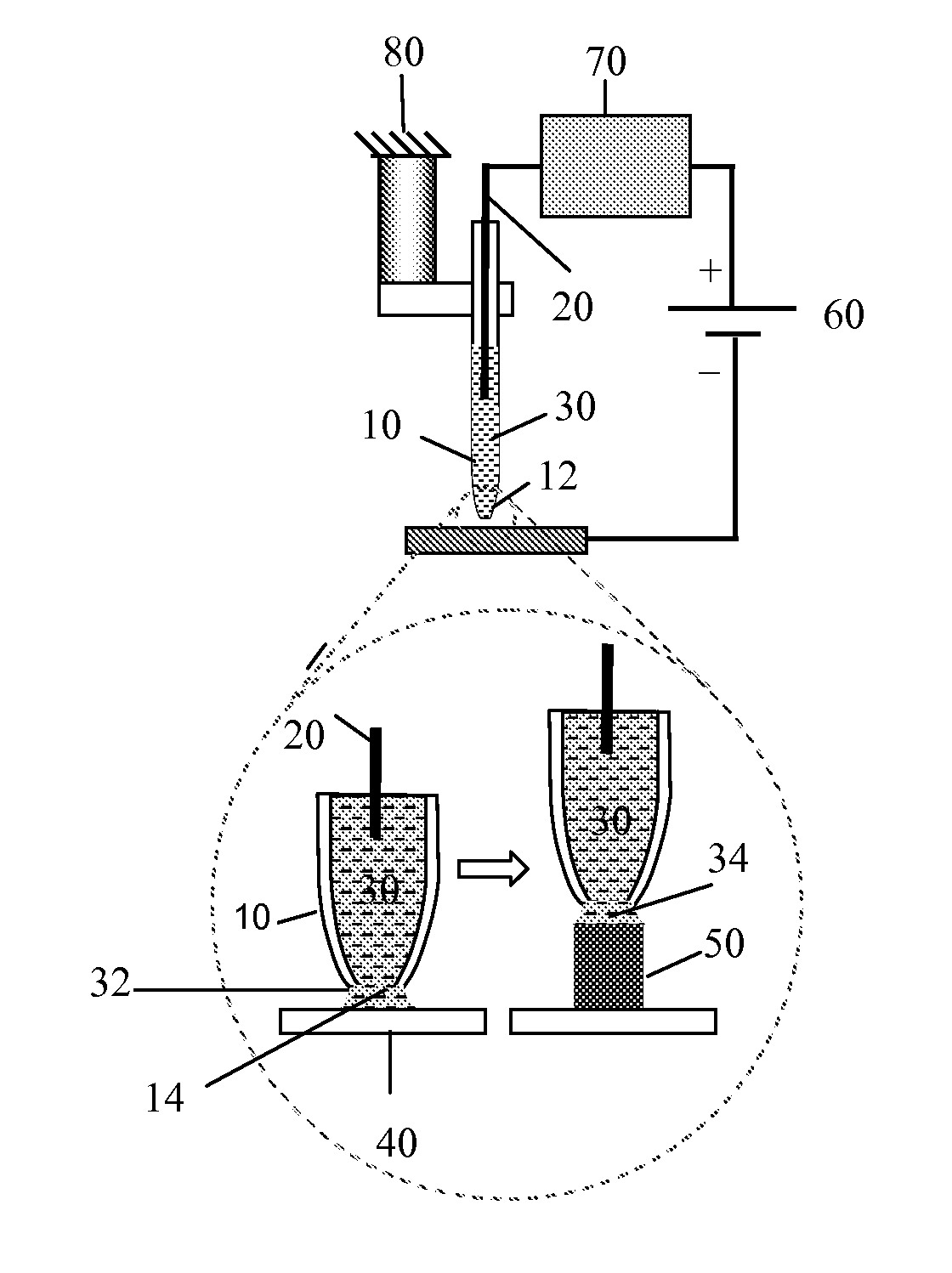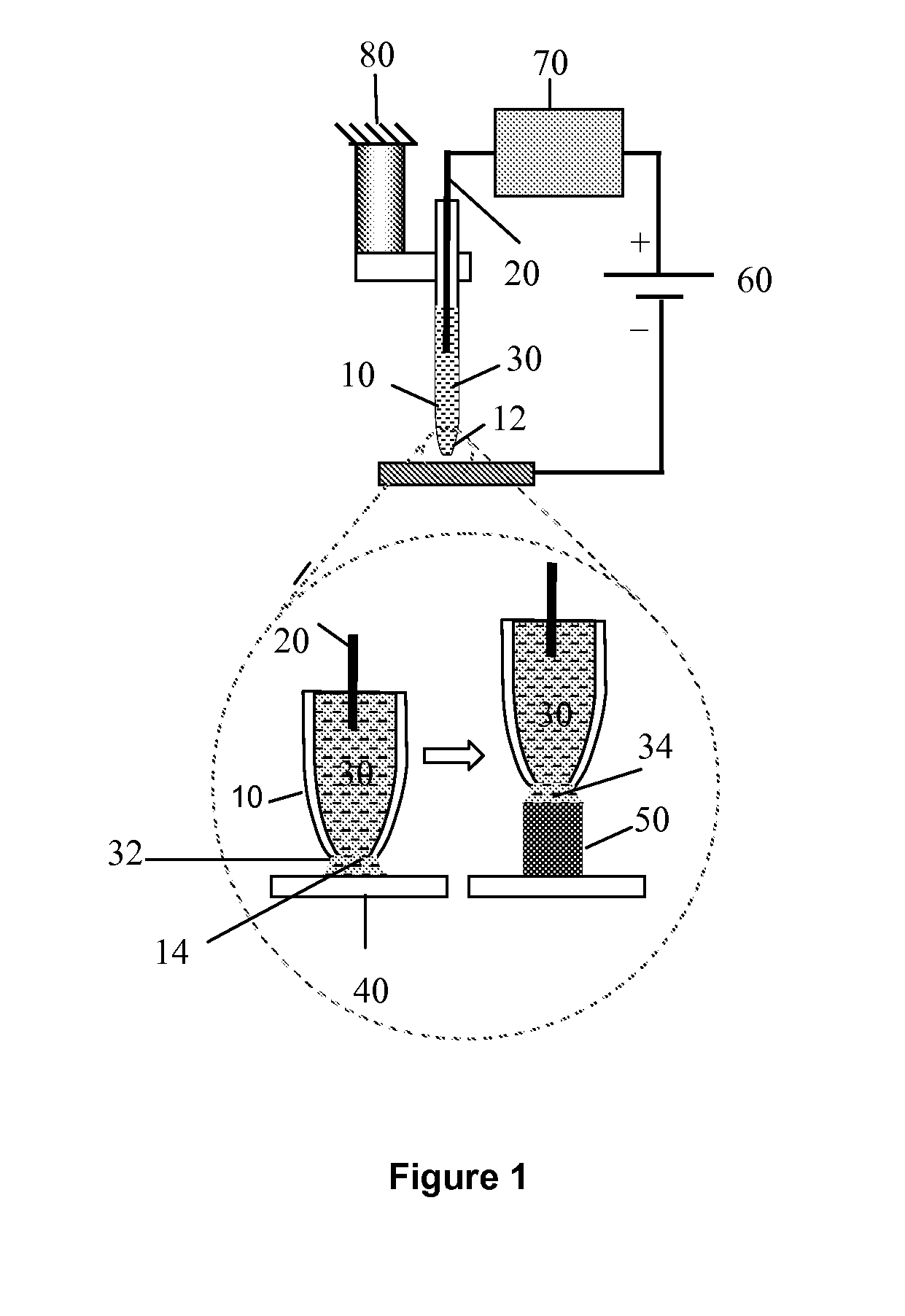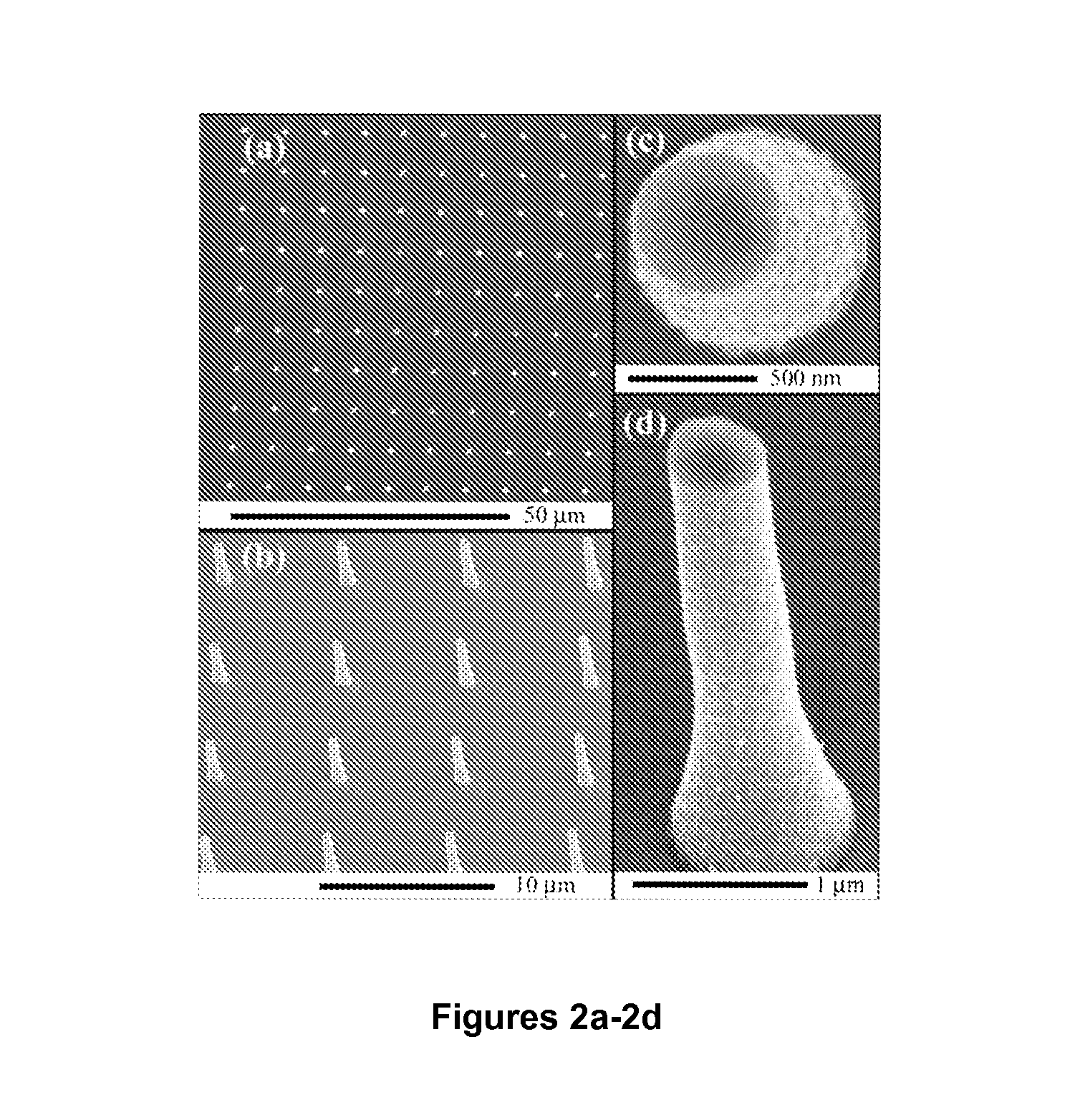Electrochemical deposition platform for nanostructure fabrication
a nano- and micro-sized technology, applied in the direction of mechanical roughness/irregularity measurement, machining electric circuits, instruments, etc., can solve the problems of electrolyte bath-based deposition not being suitable for devices, porous structure produced by this method,
- Summary
- Abstract
- Description
- Claims
- Application Information
AI Technical Summary
Benefits of technology
Problems solved by technology
Method used
Image
Examples
example 1
Electrodeposition of Cu Nanowires
[0109]Commercially available glass pipets with aperture sizes of 500, 200, and 100 nm were used. The selected pipet was filled with 0.05 M CuSO4 electrolyte (Transene Inc.) and mounted on a custom made piezo-driven flexure stage which provided fine nanometer resolution linear motion. A Cu electric wire was inserted into the electrolyte inside the pipet and functioned as an anode. A silicon substrate coated with 5 nm / 100 nm thick chrome / gold film served as a cathode and the sample surface for the nanowire deposition. Coarse motions in the x, y, and z directions were provided by Burleigh inchworm stages. For the deposition, an electric potential was applied between the substrate and the copper wire inserted into the pipet, and the pipet was moved towards the substrate by the fine and coarse motion stages. The ionic current was measured with an electrometer and monitored by a control system. As soon as the pipet came in contact with the substrate, an el...
example 2
Electrodeposition of Pt Nanowires
[0115]Commercially available glass nanopipets with apertures as small as 100 nm were filled with 5 mM chloroplatinic acid (H2PtCl6) (pH=1) solution (Sigma-Aldrich Inc.) and used as electrochemical fountain pens. Platinum was chosen for deposition. A two-electrode configuration was used for the electrochemical deposition and the monitoring of electrochemical process (Bard, A. J. and Faulkner, L. R., “Electrochemical Methods: Fundamentals and Applications, 2nd Edition,” John Wiley & Sons, Inc, New York, 2001). A 250 μm diameter platinum wire was inserted into the nanopipet to act as the reference electrode during deposition. For convenience in later characterization, the cantilever surface of a conductive (Pt / Ir coated) AFM probe was used as the working electrode and the surface for nanowire deposition. The cantilever of the AFM probe, which has a relatively high spring constant of ˜3 N / m, acts just as a rigid substrate, and introduces no obvious uncer...
example 3
Electrodeposition of Microsized Metal Tubes
[0122]Microsized metal tubes have been deposited having an outer diameter of 2 microns and a wall thickness less than 0.5 nm. Experimental conditions were similar to those in Example 1, but the pipette had a larger aperture, approximately 2 microns. FIG. 8a shows an SEM image of the outside of the tube; FIG. 8b is a cutaway view of the tube in FIG. 8a.
PUM
| Property | Measurement | Unit |
|---|---|---|
| size | aaaaa | aaaaa |
| aspect ratio | aaaaa | aaaaa |
| aspect ratio | aaaaa | aaaaa |
Abstract
Description
Claims
Application Information
 Login to View More
Login to View More - R&D
- Intellectual Property
- Life Sciences
- Materials
- Tech Scout
- Unparalleled Data Quality
- Higher Quality Content
- 60% Fewer Hallucinations
Browse by: Latest US Patents, China's latest patents, Technical Efficacy Thesaurus, Application Domain, Technology Topic, Popular Technical Reports.
© 2025 PatSnap. All rights reserved.Legal|Privacy policy|Modern Slavery Act Transparency Statement|Sitemap|About US| Contact US: help@patsnap.com



